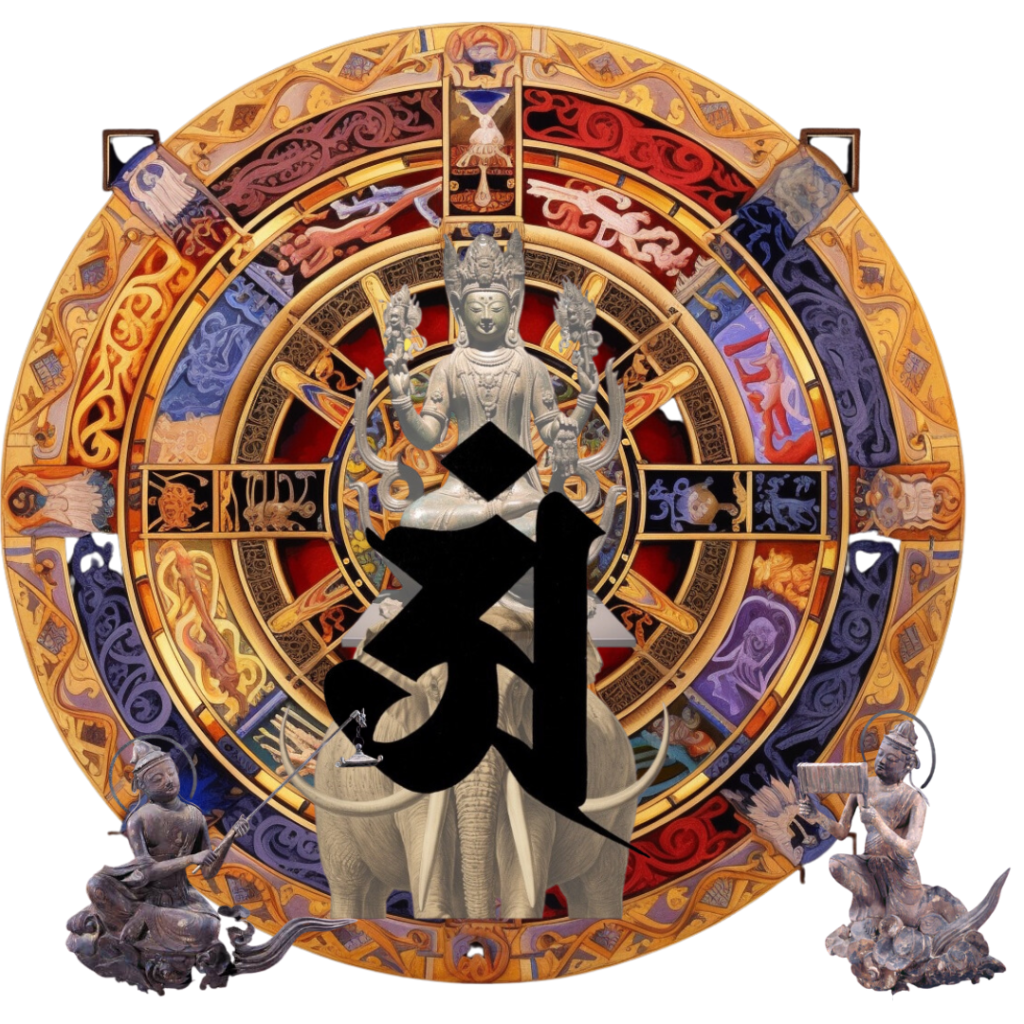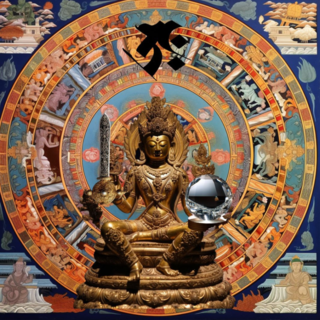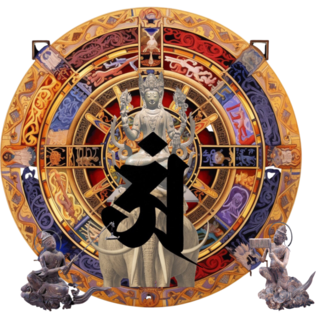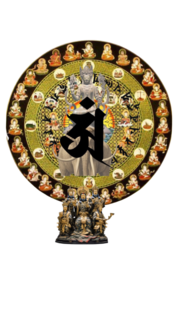空海(くうかい)は、9世紀の日本の僧侶で、真言宗の創始者として知られています。空海は、弘法大師としても知られており、日本における密教の発展に大きく貢献しました。
空海は、774年に出家し、その後、唐に渡って密教を学びました。唐での修行中に、空海は真言密教(密教の一派)の教えを学び、それを日本に持ち帰りました。空海は、真言密教の教えを日本で普及させるために、多くの書物を著し、真言宗の教義を体系化しました。
また、空海は、真言宗のために多くの寺院を建立し、真言宗の教えを広めることに尽力しました。空海は、多くの弟子を育て、その中には後に真言宗の宗祖となる僧侶・最澄もいました。
真言宗は、日本の仏教の一派で、密教の教えを基盤としています。その起源は、8世紀初頭に空海(弘法大師)が中国・唐に留学して密教の教えを学び、帰国して日本に伝えたことに始まります。真言宗は、密教の教えを日本に定着させ、独自の発展を遂げたとされています。
真言宗では、真言(しんごん)と呼ばれる秘密の言葉や呪文を唱えることによって、人々が仏性を開発し、悟りを得ることを目的としています。真言は、梵字(サンスクリット語の文字)を用いて表記され、それらを特定の順序で唱えることによって、様々な力を発揮するとされています。
真言宗には、多くの宗派が存在し、それぞれ異なる修法や教義を持っています。最も有名な宗派は、東寺真言宗(とうじしんごんしゅう)で、京都市の東寺を総本山としています。また、真言宗の教えは、天台宗や禅宗といった他の宗派とも関連があります。
真言宗の僧侶は、出家して修行を行い、檀家(だんか:信徒)の指導や法要などを務めます。真言宗の寺院では、檀家の信仰心に応えるために、祈祷や読経などの儀式が行われます。真言宗の教えは、密教的な性格を持つため、一般的には難解なものとされていますが、信仰心を持って学ぶことによって、深い宗教的な経験を得ることができるとされています。
Kukai was a ninth-century Japanese monk, best known as the founder of the Shingon sect of Buddhism. Kukai, also known as Kobo Daishi, greatly contributed to the development of Esoteric Buddhism in Japan.
Kukai became a priest in 774, and after that he went to Tang to study esoteric Buddhism. During his training in Tang, Kukai learned the teachings of Shingon Esoteric Buddhism (a sect of Esoteric Buddhism) and brought it back to Japan. In order to spread the teachings of Shingon Esoteric Buddhism in Japan, Kukai wrote many books and systematized the doctrines of the Shingon sect.
Kukai also built many temples for the Shingon sect and worked to spread the teachings of the Shingon sect. Kukai trained many disciples, including the monk Saicho, who later became the founder of the Shingon sect.
Shingon Buddhism is a sect of Japanese Buddhism based on the teachings of Esoteric Buddhism. Its origin dates back to the early 8th century, when Kukai (Kobo Daishi) studied in Tang, China, learned Esoteric Buddhism, and brought it back to Japan. Shingon Buddhism is said to have developed in its own way by establishing the teachings of Esoteric Buddhism in Japan.
The purpose of Shingon Buddhism is for people to develop their buddha nature and attain enlightenment by chanting secret words and spells called shingon. Mantras are written using Sanskrit characters, and by chanting them in a specific order, various powers are said to be exerted.
There are many sects in the Shingon sect, each with their own training methods and doctrines. The most famous sect is the Toji Shingon sect, which has Toji in Kyoto as its head temple. The teachings of Shingon Buddhism are also related to other sects such as Tendai and Zen Buddhism.
Priests of the Shingon sect enter the priesthood to practice training, and serve as guidance and memorial services for the parishioners (danka: believers). At Shingon sect temples, ceremonies such as prayers and sutra chanting are held to respond to the faith of the parishioners. The teachings of the Shingon sect are generally regarded as difficult to understand due to their esoteric nature, but it is said that by studying them with faith one can gain a deep religious experience.
【このカテゴリーの最新記事】
-
no image









